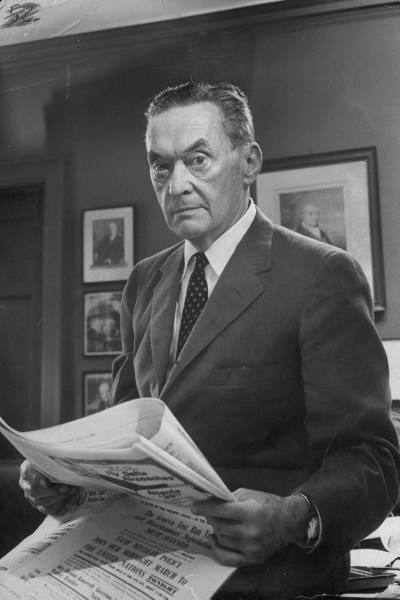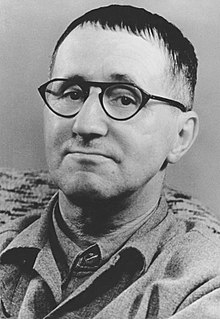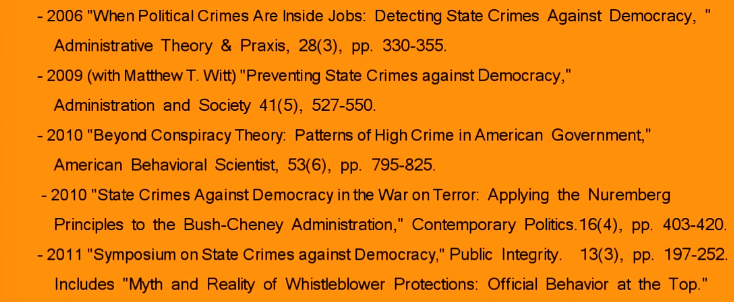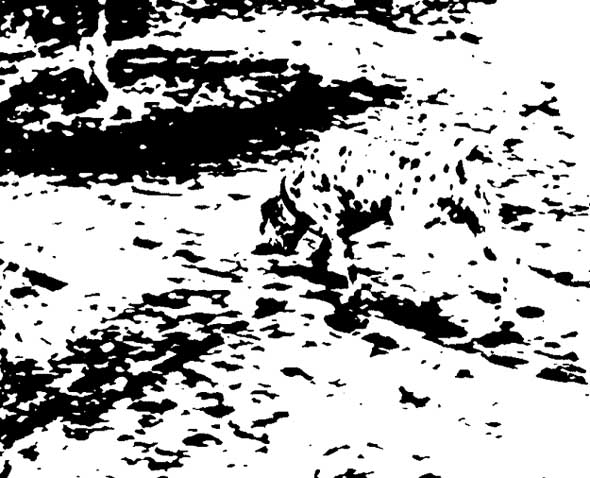A historical inventory: How the “conspiracy theory meme” was de facto intentionally created by govermental think-tanks in order to steer public discourse
Professor Lance deHaven-Smith (professor emeritus of political science at Florida State University) writes the following about the history of the “conspiracy theory ” in his peer-reviewed book entitled which was published by the University of Texas Press in 2013:
Der Begriff "Verschwörungstheorie" wurde 1964 von der CIA erfunden und in den öffentlichen Diskurs eingebracht, um die vielen Skeptiker zu diskreditieren, die die Schlussfolgerung der Warren-Kommission anzweifelten, dass Präsident John F. Kennedy von einem einsamen Schützen namens Lee Harvey Oswald ermordet wurde, der selbst in Polizeigewahrsam ermordet wurde, bevor er befragt werden konnte. Die CIA nutzte ihre Freunde in den Medien, um eine Kampagne zu starten, die den Verdacht gegen den Bericht der Warren-Kommission zur Zielscheibe von Spott und Anfeindungen machte. Diese Kampagne war "eine der erfolgreichsten Propaganda-Initiativen aller Zeiten".
Chronological Ngram chart for the “conspiracy theory meme” (Google Books Ngram Viewer) in support of the hypothesis by Professor Lance DeHaven-Smith. The x-axis represents years in chronological order; the y-axis represents the percentage of books that a particular word or phrase appears in during that given year.
Argumentum ad hominem
Ad hominem (Latin for ‘to the person’), short for argumentum ad hominem, is a term that refers to several types of arguments, most of which are fallacious. Typically this term refers to a rhetorical strategy where the speaker attacks the character, motive, or some other attribute of the person making an argument rather than attacking the substance of the argument itself. This avoids genuine debate by creating a diversion to some irrelevant but often highly charged issue. The fallacious attack can also be direct to membership in a group or institution.
https://de.wikipedia.org/wiki/Argumentum_ad_hominem
Der Begriff "Verschwörungstheorie" als Werkzeug der kulturellen Hegemonie:
Eine kritische Diskursanalyse
Eine kürzlich als Dissertation veröffentlichte systematische Diskursanalyse untermauert diese Analyse mit Belegen aus einer Vielzahl von Quellen.
. (2018). The conspiracy theory meme as a tool of cultural hegemony: A critical discourse analysis. Dissertation Abstracts International: Section B: The Sciences and Engineering
Abstract (Zusammenfassung)
Diejenigen, die die offiziellen Darstellungen von bedeutenden verdächtigen und einschneidenden Ereignissen ablehnen, werden oft als Verschwörungstheoretiker bezeichnet und die alternativen Erklärungen, die sie vorschlagen, werden oft als Verschwörungstheorien bezeichnet. Diese Etiketten werden oft verwendet, um die Überzeugungen derjenigen Individuen abzutun, die die potenziell hegemoniale Kontrolle darüber, was die Menschen glauben, in Frage stellen. Das Konzept der Verschwörungstheorie fungiert als ein Hindernis für die legitime diskursive Auseinandersetzung mit Verschwörungsverdächtigungen. Die Wirkung des Etiketts scheint selbst die angesehensten Denker zu behindern. Dieses Hindernis ist besonders problematisch in der Wissenschaft, wo eine gründliche, objektive Analyse von Informationen entscheidend für die Aufdeckung der Wahrheit ist und wo Mitglieder der Wissenschaft typischerweise als eine der wichtigsten epistemischen Autoritäten angesehen werden. Diese Dissertation verfolgte die Entwicklung und Verwendung solcher Begriffe als Pejorative, die verwendet werden, um kritisches Denken, Analyse und Infragestellung der Autorität zu unterbinden. Dies wurde mit Hilfe der kritischen Diskursanalyse als Forschungsmethode erreicht. In den zeitgenössischen Medien wurden Beweise gefunden, die darauf hindeuten, dass Regierungsvertreter maßgeblich an der Schaffung des pejorativen Mems Verschwörungstheoretiker beteiligt waren. Das Nachverfolgen der Entwicklung des Verschwörungstheorie-Memes und seiner Verwendung als pejorativer Schalldämpfer kann das Bewusstsein für seine Verwendung auf diese Art und Weise schärfen und seine Auswirkungen vermindern.
- URL: https://www.proquest.com/openview/55ccdf26dcda24e7190a0e99ffb88a87/1?pq-origsite=gscholar&cbl=18750&diss=y
- Free access PDF: https://www.researchgate.net/publication/322682499
Psycholinguistic Tools & Deceptive Memes
For further detailed information the see the attached official CIA document (Warren Comission Report) which was released in response to a 1976 FOIA request by the New York Times. The document shows how the term “conspiracy” was intentionally utilised to prevent critical rational analysis and “dissenting perspectives”.
Video: Secret service was called off shortly before Kennedy was killed.

Seven days before John F. Kennedy was assassinated he allegedly said, “There is a plot in this country to enslave every man, woman and child. Before I leave this high and noble office, I intend to expose this plot.” In a speech three weeks before he was murdered, John F. Kennedy asked the American people “for their help in this tremendous task of informing and alerting the American people!” For I have complete confidence in the response and dedication of our Citizens whenever they are fully informed.” Because he knew that he could not defeat this secrete society of corporate demons on his own. But “I am confident that with your help man will be what he was born to be, Free and Independent.” Source: https://books.google.co.uk/books/about/Who_killed_John_F_Kennedy_and_Why.html?id=KfjEBQAAQBAJ&redir_esc=y (So called “factcheckers” deny that Kennedy said this, e.g., https://www.politifact.com/factchecks/2019/apr/03/viral-image/no-jfk-didnt-say-he-would-expose-slavery-plot/)
***
***
***
On April 27, 1961 in New York City, Kennedy said, in part:
The very word “secrecy” is repugnant in a free and open society; and we are as a people inherently and historically opposed to secret societies, to secret oaths and to secret proceedings. We decided long ago that the dangers of excessive and unwarranted concealment of pertinent facts far outweighed the dangers which are cited to justify it. Even today, there is little value in opposing the threat of a closed society by imitating its arbitrary restrictions. Even today, there is little value in insuring the survival of our nation if our traditions do not survive with it. And there is very grave danger that an announced need for increased security will be seized upon by those anxious to expand its meaning to the very limits of official censorship and concealment.
Excerpts from the Warren Commission Report:
Conspiracy theories have frequently thrown suspicion on our organization, for example by falsely alleging that Lee Harvey Oswald worked for us. The aim of this dispatch is to provide material countering and discrediting the claims of the conspiracy theorists, so as to inhibit the circulation of such claims in other countries.
Conspiracy on the large scale often suggested would be impossible to conceal in the United States, esp. since informants could expect to receive large royalties, etc. Note that Robert Kennedy, Attorney General at the time and John F. Kennedy’s brother, would be the last man to overlook or conceal any conspiracy.
A conspirator moreover would hardly choose a location for a shooting where so much depended on conditions beyond his control: the route, the speed of the cars, the moving target, the risk that the assassin would be discovered. A group of wealthy conspirators could have arranged much more secure conditions.
In his book Professor Lance deHaven-Smith provides further historical facts on how the CIA succeeded in manipulating public opinions and how they created an uncritical, reflexive, automatic, stigmatization in the public mind towards those who challenge official government explanations (i.e., the systematic use of ad hominem stratagems such as social exclusion and ostracism based on linguistic labeling and social categorisation).
Plain numerical DOI: 10.1080/13569775.2010.523939
DOI URL
directSciHub download
Show/hide publication abstract
URL: https://zero.sci-hub.ru/4203/d9fc53386d750041db5a26ed22c79a48/dehaven-smith2010.pdf#navpanes=0&view=FitH
Here is a classical epistemological (philosophical) argument which concisely highlights the importance of free access to information (e.g., free press, media, and internet):
Nihil est in intellectu quod non sit prius in sensu
(Transl.: Nothing is in the intellect that was not first in the senses)
This postulate is known as the “Aristotelian Peripatetic Axiom” and it highlights the importance of information (input) for reasoning and knowledge. To put it simply, if information (which is perceived through the senses, e.g., eyes and ears) is not available to us, then we obviously cannot think about it. Accordingly, knowledge is fundamentally based on information. The opposite of knowing is nescience (ne-science = not knowing). The human mind is thus furnished by sensory impressions which in turn form the basis of ideas. In other words, the data which impinges on our sensory organs “determines” our worldview (i.e., our holistic perspective on reality; a Gestalt; German: Weltanschauung). Ergo, the peripatetic axiom is obviously of great pertinence in the context of the “information revolution” (the information age). Per analogiam to the agricultural revolution and industrial revolution, the digital revolution heralded the beginning of the information revolution. According to this ancient principle, any form of information censorship is thus a limitation of possible knowledge. In addition, the selective propagation of information can be used to create specific worldviews in the human mind (cf. cybernetics).
This ancient axiom of how the mind is furnished has been corroborated by fundamental research in 20th century neuroscience. For instance, the path-breaking work by Donald Hebb emphasises the importance of experience in learning. The neuronal circuitry in our brain is “wired” by incoming information. The Hebbian mantra is: “Cells that fire together wire together“.
Connected cells become engrams. Multiple cells become cell assemblies. Hebb stated the following to describe his approach:
“The general idea is an old one, that any two cells or systems of cells that are repeatedly active at the same time will tend to become ‘associated’ so that activity in one facilitates activity in the other.”(1949, p.70)
He wrote further:
“When one cell repeatedly assists in firing another, the axon of the first cell develops synaptic knobs (or enlarges them if they already exist) in contact with the soma of the second cell.” (op. cit. p.63)
In other words, repetition of specific information consolidates specific information processing pathways in the brain (per analogiam to a path in a forest which becomes more defined and more widely used the more people walk people walk on it, similarly, the ocean washes specific grooves into cliffs over elongated periods of time). Thus, our worldview is shaped by the information we are exposed to. Again, it is thus possible to “design” the available information in such a way that it creates a specific worldview (via neuro/synapto-plastic changes in the brain via the associative neuronal process of “long term potentiation”). Repetition is a key concept. The German propaganda expert Joseph Goebbels (who studied Bernays work on propaganda) understood this principle intuitively. He stated “If a lie is repeated often enough it becomes true”. The manipulative and highly centralised mass-media (see Prof. Noam Chomsky) makes systematic usage of this principle. Think about the almost hypnotic repetition of the term “weapons of mass-destruction” before the invasion of Iraq (which later turned out to be a complete lie – but by then the imprint in the public mind was already created and extinction is a cumbersome process).
Interestingly in the broader context at hand, Hebb had close ties with the CIA and his methods were applied for the amoral and inhuman KUBARK torture manual of the CIA which was recently declassified. Sensory deprivation is one of several torture methods to “break down the psyche of human beings” discussed in this manual. Hebb participated in the CIA project “Bluebird” (which had the objective to make people “sing like a bluebird” even against their will). Project Bluebird was the predecessor of Project Artichoke which was then preceded by the notorious MK-Utra program which, inter alia, tested psychedelics compounds on non-consenting naïve populations (prisoners, mental patients, homeless, etc.). Hebb’s work thus laid the groundwork for later CIA programs which were primarily concerned with the manipulating the human mind (and consequently human behaviour).
Hebb’s Rule can be mathematically generalized as follows:
![]()
or the change in the ith synaptic weight wi is equal to a learning rate η times the ith input xi times the postsynaptic response y.
Often cited is the case of a linear neuron as:

The crux of the argument is that the brain learns by repetition and that information shapes our brain and hence our worldview (our mental model of reality).
Nihil est in intellectu quod non sit prius in sensu
(Transl.: Nothing is in the intellect that was not first in the senses)
, 43(2), 205–213.
Plain numerical DOI: 10.1002/jhbs.20225
DOI URL
directSciHub download
Show/hide publication abstract
, 43(4), 401–417.
Plain numerical DOI: 10.1002/jhbs.20271
DOI URL
directSciHub download
Show/hide publication abstract
, 51(30)
Plain numerical DOI: 10.1037/a0003712
DOI URL
directSciHub download
Show/hide publication abstract
, 63(4), 633.
Plain numerical DOI: 10.2307/1418888
DOI URL
directSciHub download
Show/hide publication abstract
, 1(2), 43–47.
Plain numerical DOI: 10.1016/S0950-5601(53)80053-5
DOI URL
directSciHub download
Show/hide publication abstract
Open the application fullscreen mode for optimal graphical performance
, 2(11), 1019–1025.
Plain numerical DOI: 10.1038/14819
DOI URL
directSciHub download
Show/hide publication abstract
, 11(12), 520–527.
Plain numerical DOI: 10.1016/j.tics.2007.09.009
DOI URL
directSciHub download
Show/hide publication abstract
, 11(10), 1129–35. Retrieved from http://www.ncbi.nlm.nih.gov/pubmed/18828191
Show/hide publication abstract
 “The conscious and intelligent manipulation of the organized habits and opinions of the masses is an important element in democratic society. Those who manipulate this unseen mechanism of society constitute an invisible government which is the true ruling power of our country. We are governed, our minds are molded, our tastes formed, our ideas suggested, largely by men we have never heard of. This is a logical result of the way in which our democratic society is organized. Vast numbers of human beings must cooperate in this manner if they are to live together as a smoothly functioning society.Our invisible governors are, in many cases, unaware of the identity of their fellow members in the inner cabinet.They govern us by their qualities of natural leadership, their ability to supply needed ideas and by their key position in the social structure. Whatever attitude one chooses to take toward this condition, it remains a fact that in almost every act of our daily lives, whether in the sphere of politics or business, in our social conduct or our ethical thinking, we are dominated by the relatively small number of persons—a trifling fraction of our hundred and twenty million—who understand the mental processes and social patterns of the masses. It is they who pull the wires which control the public mind, who harness old social forces and contrive new ways to bind and guide the world.” (Edward Bernays, Propaganda, 1928)
“The conscious and intelligent manipulation of the organized habits and opinions of the masses is an important element in democratic society. Those who manipulate this unseen mechanism of society constitute an invisible government which is the true ruling power of our country. We are governed, our minds are molded, our tastes formed, our ideas suggested, largely by men we have never heard of. This is a logical result of the way in which our democratic society is organized. Vast numbers of human beings must cooperate in this manner if they are to live together as a smoothly functioning society.Our invisible governors are, in many cases, unaware of the identity of their fellow members in the inner cabinet.They govern us by their qualities of natural leadership, their ability to supply needed ideas and by their key position in the social structure. Whatever attitude one chooses to take toward this condition, it remains a fact that in almost every act of our daily lives, whether in the sphere of politics or business, in our social conduct or our ethical thinking, we are dominated by the relatively small number of persons—a trifling fraction of our hundred and twenty million—who understand the mental processes and social patterns of the masses. It is they who pull the wires which control the public mind, who harness old social forces and contrive new ways to bind and guide the world.” (Edward Bernays, Propaganda, 1928)
- Bernays, E. L. (1928). Propaganda. Horace Liveright.
- Bernays, E. L. (1936). Freedom of Propaganda. Vital Speeches of the Day, 2(24), 744–746.
- L’Etang, J. (1999). The father of spin: Edward L. Bernays and the birth of public relations. Public Relations Review, 25(1), 123–124.
 "Dass die Herstellung von Zustimmung zu großen Verfeinerungen fähig ist, bestreitet, glaube ich, niemand. Der Prozess, durch den öffentliche Meinungen entstehen, ist sicherlich nicht weniger kompliziert, als er auf diesen Seiten erschienen ist, und die Möglichkeiten zur Manipulation, die jedem offenstehen, der den Prozess versteht, sind deutlich genug. . . . [Als Ergebnis der psychologischen Forschung, gepaart mit den modernen Kommunikationsmitteln, hat die Praxis der Demokratie eine Wendung genommen. Es findet eine Revolution statt, die unendlich viel bedeutsamer ist als jede Verschiebung der wirtschaftlichen Macht.... Unter dem Einfluss der Propaganda, nicht unbedingt nur in der unheilvollen Bedeutung des Wortes, sind die alten Konstanten unseres Denkens zu Variablen geworden. Es ist zum Beispiel nicht mehr möglich, an das ursprüngliche Dogma der Demokratie zu glauben; dass das Wissen, das für die Verwaltung der menschlichen Angelegenheiten benötigt wird, spontan aus dem menschlichen Herzen kommt. Wo wir nach dieser Theorie handeln, setzen wir uns der Selbsttäuschung und Formen der Überredung aus, die wir nicht überprüfen können. Es ist bewiesen, dass wir uns nicht auf Intuition, Gewissen oder die Zufälle einer zufälligen Meinung verlassen können, wenn wir uns mit der Welt außerhalb unserer Reichweite befassen wollen. ... Die Öffentlichkeit muss in ihre Schranken gewiesen werden, damit jeder von uns frei von dem Getrampel und Gebrüll einer verwirrten Herde leben kann." (Walter Lippmann, Öffentliche Meinung, Kapitel XV)
"Dass die Herstellung von Zustimmung zu großen Verfeinerungen fähig ist, bestreitet, glaube ich, niemand. Der Prozess, durch den öffentliche Meinungen entstehen, ist sicherlich nicht weniger kompliziert, als er auf diesen Seiten erschienen ist, und die Möglichkeiten zur Manipulation, die jedem offenstehen, der den Prozess versteht, sind deutlich genug. . . . [Als Ergebnis der psychologischen Forschung, gepaart mit den modernen Kommunikationsmitteln, hat die Praxis der Demokratie eine Wendung genommen. Es findet eine Revolution statt, die unendlich viel bedeutsamer ist als jede Verschiebung der wirtschaftlichen Macht.... Unter dem Einfluss der Propaganda, nicht unbedingt nur in der unheilvollen Bedeutung des Wortes, sind die alten Konstanten unseres Denkens zu Variablen geworden. Es ist zum Beispiel nicht mehr möglich, an das ursprüngliche Dogma der Demokratie zu glauben; dass das Wissen, das für die Verwaltung der menschlichen Angelegenheiten benötigt wird, spontan aus dem menschlichen Herzen kommt. Wo wir nach dieser Theorie handeln, setzen wir uns der Selbsttäuschung und Formen der Überredung aus, die wir nicht überprüfen können. Es ist bewiesen, dass wir uns nicht auf Intuition, Gewissen oder die Zufälle einer zufälligen Meinung verlassen können, wenn wir uns mit der Welt außerhalb unserer Reichweite befassen wollen. ... Die Öffentlichkeit muss in ihre Schranken gewiesen werden, damit jeder von uns frei von dem Getrampel und Gebrüll einer verwirrten Herde leben kann." (Walter Lippmann, Öffentliche Meinung, Kapitel XV)
- Lippmann, W. (1920). Liberty and the News. Museum.
- Lippmann, W. (1970). The Phantom Public. Politics.
 Ab 1930 wurde Brecht Teil eines größeren Komplexes von Projekten, die die Rolle der Intellektuellen (oder "Tuis", wie er sie nannte) in einer kapitalistischen Gesellschaft erforschten. Ein Tui ist ein Intellektueller, der seine Fähigkeiten und Meinungen als Ware auf dem Markt verkauft oder der sie benutzt, um die herrschende Ideologie einer unterdrückenden Gesellschaft zu unterstützen. ] Der deutsche Theatermodernist Bertolt Brecht erfand den Begriff und verwendete ihn in einer Reihe von kritischen und kreativen Projekten, unter anderem für den Stoff, den er Mitte der 1930er Jahre für seinen sogenannten Tui-Novel entwickelte - eine unvollendete Satire auf die Intellektuellen im Deutschen Kaiserreich und in der Weimarer Republik - und für seine epische Komödie aus den frühen 1950er Jahren, Turandot oder der Kongress der Weißwäscher. Das Wort ist ein Neologismus, der sich aus einem Wortspiel mit "Intellektueller" ("Tellekt-Ual-In") ergibt.
Nach Clark (2006):
“... the critique of intellectuals which Brecht developed... around the notion of ‘Tuismus’ engages a model of the public intellectual in which the self-image of the artist and thinker as a socially and politically engaged person corresponded to the expectations of the public.”
Ab 1930 wurde Brecht Teil eines größeren Komplexes von Projekten, die die Rolle der Intellektuellen (oder "Tuis", wie er sie nannte) in einer kapitalistischen Gesellschaft erforschten. Ein Tui ist ein Intellektueller, der seine Fähigkeiten und Meinungen als Ware auf dem Markt verkauft oder der sie benutzt, um die herrschende Ideologie einer unterdrückenden Gesellschaft zu unterstützen. ] Der deutsche Theatermodernist Bertolt Brecht erfand den Begriff und verwendete ihn in einer Reihe von kritischen und kreativen Projekten, unter anderem für den Stoff, den er Mitte der 1930er Jahre für seinen sogenannten Tui-Novel entwickelte - eine unvollendete Satire auf die Intellektuellen im Deutschen Kaiserreich und in der Weimarer Republik - und für seine epische Komödie aus den frühen 1950er Jahren, Turandot oder der Kongress der Weißwäscher. Das Wort ist ein Neologismus, der sich aus einem Wortspiel mit "Intellektueller" ("Tellekt-Ual-In") ergibt.
Nach Clark (2006):
“... the critique of intellectuals which Brecht developed... around the notion of ‘Tuismus’ engages a model of the public intellectual in which the self-image of the artist and thinker as a socially and politically engaged person corresponded to the expectations of the public.”
- Clark, M. W. (2006). Hero or villain? Bertolt Brecht and the crisis surrounding June 1953. Journal of Contemporary History.
- Hunt, T. C. N.-. (2004). Goodbye to Berlin: For 200 years, German thinkers have shaped British intellectual life - but their influence is fading fast. The Guardian.
 "Es ist sehr nützlich, zwischen rationaler und irrationaler Autorität zu unterscheiden. Mit irrationaler Autorität meine ich Autorität, die durch Angst und Druck auf der Basis emotionaler Unterwerfung ausgeübt wird. Dies ist die Autorität des blinden Gehorsams, die Autorität, die Sie in allen totalitären Ländern am deutlichsten zum Ausdruck gebracht finden.
But there is another kind of authority, rational authority by which I mean any authority which is based on competence and knowledge, which permits criticism, which by its very nature tends to diminish, but which is not based on the emotional factors of submission and masochism, but on the realistic recognition of the competence of the person for a certain job.”
― 1958. The Moral Responsibility of Modern Man, in: Merrill-Palmer. Quarterly of Behavior and Development, Detroit, Vol. 5, p. 6.
"Es ist sehr nützlich, zwischen rationaler und irrationaler Autorität zu unterscheiden. Mit irrationaler Autorität meine ich Autorität, die durch Angst und Druck auf der Basis emotionaler Unterwerfung ausgeübt wird. Dies ist die Autorität des blinden Gehorsams, die Autorität, die Sie in allen totalitären Ländern am deutlichsten zum Ausdruck gebracht finden.
But there is another kind of authority, rational authority by which I mean any authority which is based on competence and knowledge, which permits criticism, which by its very nature tends to diminish, but which is not based on the emotional factors of submission and masochism, but on the realistic recognition of the competence of the person for a certain job.”
― 1958. The Moral Responsibility of Modern Man, in: Merrill-Palmer. Quarterly of Behavior and Development, Detroit, Vol. 5, p. 6.

